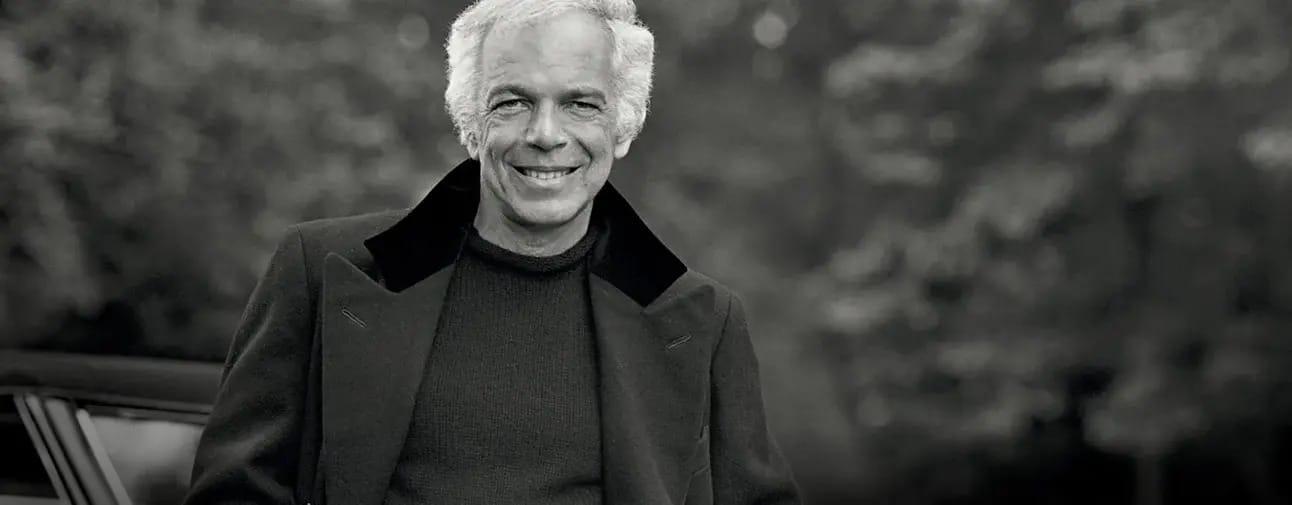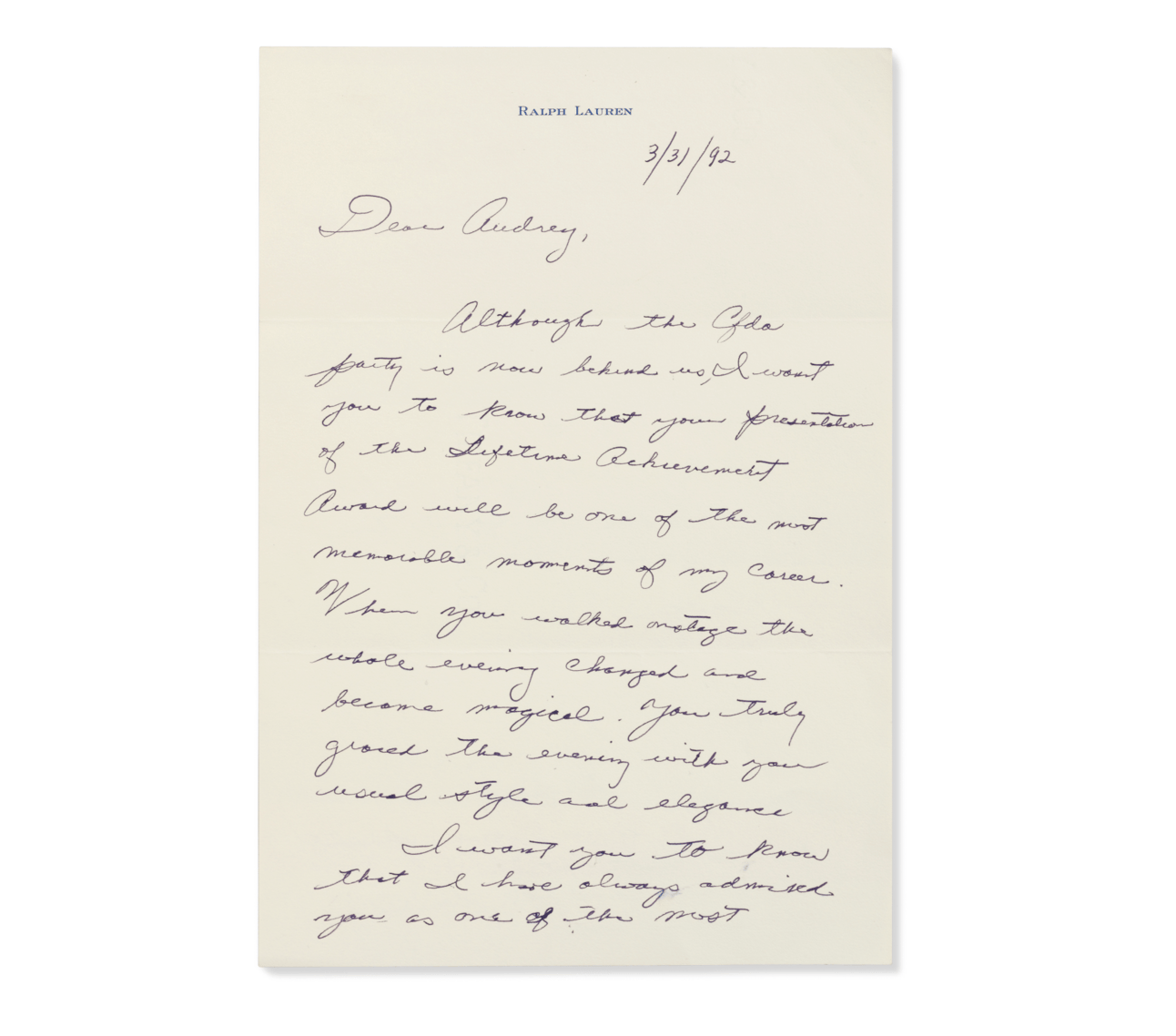- The Weekly Mensch
- Posts
- The Weekly Mensch: Ralph Lauren
The Weekly Mensch: Ralph Lauren
A timeless perspective on a world of heroes grounded in consistency, integrity, and righteousness
Us in a Nutshell
We are passionate about the lives, the impact, and the experience of Jewish baby boomers who have changed our world. From finance to the arts, we write about the stories of contemporary heroes who — significantly and meaningfully — changed the face of their respective industries, often starting with nothing but a legacy of exile. We tell their stories for the timeless lessons of intelligence, ethics, and resilience they underline. And we also share some fun anecdotes! Nathan Tob is a fourth-year student at the Queen Mary University of London. He studies Economics, Finance, and Management. Davy Sokolski is a third-year student at Columbia University in New York. He studies International Political Economy.
What is a Mensch?
Leo Rosten defines mensch as “someone to admire and emulate, someone of noble character.” Dr. Saul Levine writes in Psychology Today that a mensch’s personality characteristics include decency, wisdom, kindness, honesty, trustworthiness, respect, benevolence, compassion, and altruism.
Rapid Bio

Credit: Vogue
Ralph Lauren, born Ralph Lifshitz on October 14, 1939, in the Bronx, New York, was the third of four siblings in a Jewish immigrant family. His parents, Frieda (Cutler) and Frank Lifshitz, came from Poland (now Belarus) searching for a better life. Growing up in a modest neighborhood, Ralph developed big dreams early on. At 16, he changed his last name to Lauren to avoid schoolyard teasing, and even then, he showed an eye for style, selling handmade neckties to classmates.
After high school, he briefly attended Baruch College before leaving to join the U.S. Army. By 1964, he was working at Brooks Brothers, where he began to understand classic American fashion. In 1967, with a $50,000 loan, he launched his first necktie line under the "Polo" label, a name inspired by his love for sports.
By the 1970s, Lauren expanded into women’s fashion and introduced the Polo shirt with its now-iconic logo, a staple of American style. His designs for The Great Gatsby and Annie Hall cemented his influence in fashion and culture. In 1984, he opened his first flagship store in the transformed Rhinelander Mansion in New York, bringing his vision of American luxury to life. The brand went public in 1997, solidifying his empire.
Beyond fashion, Lauren established the American Heroes Fund after 9/11 and the Ralph Lauren Center for Cancer Care in 2003. His contributions earned him accolades, including France’s Legion of Honor in 2010. Today, Ralph Lauren’s legacy endures as a visionary who redefined American style and lifestyle.
Ralph’s 5 lessons
1. It’s not about a breakthrough, it’s about a point of view
For Ralph Lauren, success was never about a single, defining moment. His journey wasn’t a series of explosive breakthroughs but a steady, almost instinctual progression toward his own vision. Growing up in the Bronx, Ralph wasn’t focused on fame or wealth; those were distant ideas. Instead, he was driven by his own way of seeing the world—a perspective shaped by a childhood spent playing sports and imagining himself as one of the heroes he admired in films and books. When he created his first line of wide ties, it wasn’t based on market trends or a business plan. It was simply something he believed in, reflecting his own sense of style and his very singular point of view. “The clothes that I design and the lifestyle that I portray have always been about what I am.”
True success is not about sudden breakthroughs but about having a vision and the patience to let it unfold. The world often seems to reward instant results, but consistency—believing in a path even when it isn’t the quickest or easiest—is what really pays off. Be consistent and stubborn with your own perspective while embracing innovation; the breakthrough will be that of your vision.
2. Surround your world with heroes
Ralph’s world was filled with heroes. Growing up, he admired figures like Cary Grant, who carried an elegance and strength that transcended the screen. These heroes weren’t just celebrities to Ralph; they were ideals, embodiments of grace, strength, and integrity. These figures represented enduring qualities, setting a standard he aspired to, shaping his values and the work he created. “I was influenced by the good guy. The man on the white horse. My life and my career is a combination of heroes,” he once shared. Ralph’s heroes became a foundation of values he carried with him, reminders of the world he wanted to build for himself.
Leave a place for your own heroes. In the movies you watch and the books you read, extract the elements of the characters that inspire you, that you want to become. It is in the heroes we admire that we find reflections of our best selves. Ralph’s journey was all about building a world for the models who inspired him—not just for their skills, but for their attitude and character. Heroes shape us; they help us build the kind of life we’re proud to live.
3. Design the clothes you want to wear
Ralph never saw himself as a designer, nor did he aspire to be one. His interests lay in creating a life—a world he could inhabit, a life he could live fully. From the beginning, his choices were guided by his own sense of style rather than trends. “There are people who make products and just sell them to others. And there are people who make products, but they live what they do; their products are about who they are.” To Ralph, clothing was not about fleeting fashion but about identity. When he began designing women’s clothes, he created pieces he imagined his girlfriend wearing. His products were expressions of his aspirations, blending his reality with the dreams that guided him forward. Ralph Lauren’s products were part of Ralph’s personality; he designed what he was—or what he aspired to be. He understood that clothing could be a powerful form of storytelling, allowing people to step into the person they strive to become and inspiring others to do the same.
Everything we create, no matter how big or small, tells a piece of our story, of our innermost sense of what ‘good’ means. Every choice, every detail reflects who we are and the life we’re shaping for ourselves. Authenticity touches more than the pursuit of frivolous trends. As Steve Jobs famously said, “Customers do not know what they want until you show them your best.”
4. Embrace unobsolescence
Ralph valued longevity and cherished things that didn’t feel disposable. Lauren was drawn to the idea of permanence, admiring the concept of “unobsolescence”—the idea that certain things do not age, or even that sometimes value lies in aging, which he said “was so European.” His iconic Polo shirt is a perfect example of this philosophy. For Ralph, timelessness wasn’t just a design principle but a way of life. As he grew older, he reflected on how we view ourselves from the outside, often feeling we’re never quite “grown-ups.” This perspective allowed him to stay connected to a sense of youthfulness and timelessness that felt as enduring as his designs: “I love things that are not frivolous. I love things that go on. I love the timelessness of an attitude, of a jacket. A tweed jacket has represented the same thing to people over my lifetime: easiness, elegance.”
Unobsolescence embodies the value of the absolute. It is about finding a lasting truth rather than chasing the new. While everyone focuses on the next big thing, Ralph showed the power of pursuing the universal and innovating around it. For Ralph, this was a principle of business and life: build one that is steady and rooted, and focus on what endures, not what fades.
5. Take the time to care
On the same day Ralph made the cover of Time magazine, he was diagnosed with brain cancer. For Ralph, it was a moment of profound vulnerability that left him feeling humbled and deeply aware of life’s preciousness, “not as much for myself but for the look in the eyes of my wife and children after I told them.” Right after his post-surgery recovery, Ralph met Nina Hyde, a journalist who was fighting breast cancer, and this encounter struck something deep within him—a shared recognition of life’s unpredictability and preciousness. He wasn’t a philanthropist by profession, but his encounter with Nina moved him to action. Ralph didn’t just lend support; he dedicated himself to the cause, raising awareness and funds for cancer research in a deeply personal way. This wasn’t about public recognition or goodwill; it was about a need to help. Ralph’s experience taught him that true success isn’t measured by awards but by the lives we touch.
Real success encompasses how we maximize our positive externalities. Ralph’s compassion during a vulnerable time taught him—and us—that the most lasting legacy is built on being a Mensch. Our deepest impact often comes from the influence we have on others (through business, life, and philanthropy). Ralph not only defined a universal point of view but also built a legacy of compassion and impact.
The quote of the week
“You have not only created a total concept of fashion and style, but by your consistency and integrity, you have protected it, always reminding us of the best things in life”

An autograph letter, signed, from Ralph Lauren to Audrey Hepburn on Lauren's personalized stationery, dated 31 March 1992, the letter in blue ink on both sides of a single sheet, thanking Audrey for presenting him with the CFDA Lifetime Achievement Award, which he declares as ...one of the most memorable moments of my career, remembering how she brought magic to the occasion with her style and elegance, Lauren proclaims his admiration for ...one of the most talented and elegant women in the world, and conveys his happiness in their friendship, going on to invite Audrey and Rob to spend time at his country home in Bedford, signed My very best wishes to you & Rob, Love Ralph (https://www.christies.com/en/lot/lot-6100150).
Reply